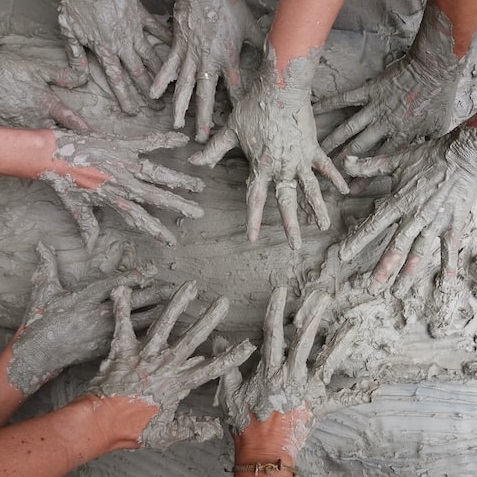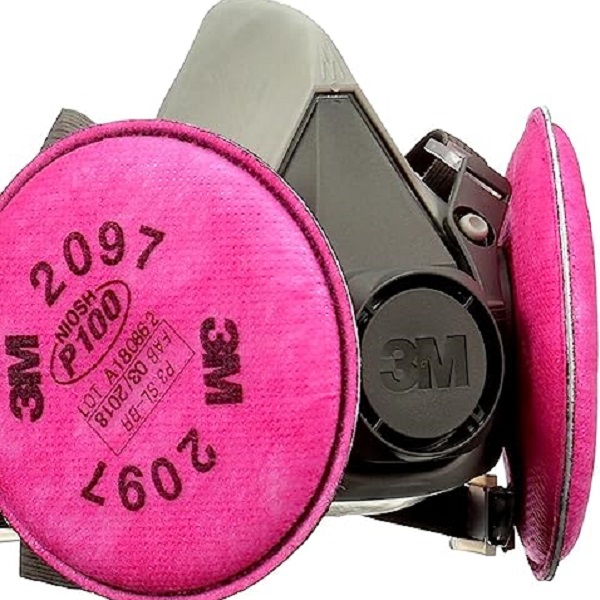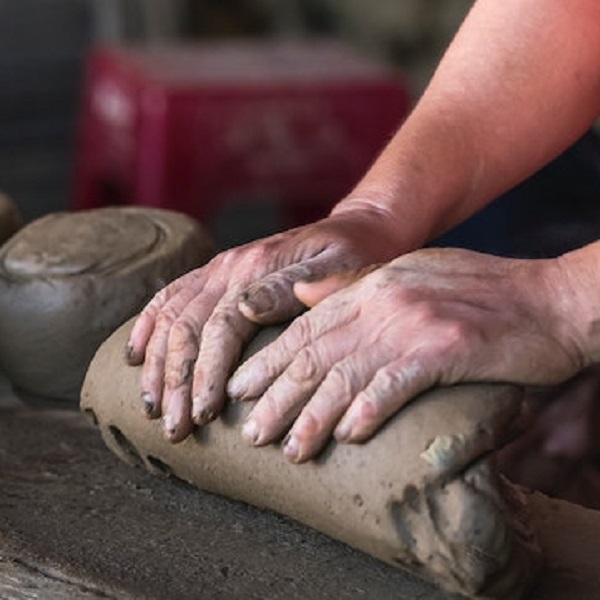What are the 6 Stages of clay? In short, they are slip, plastic, leather hard, bone dry, bisqueware and glazeware. We dive into the details of each stage, including photos!
This guide to the various stages of clay will help you understand each stage, what it looks like, and what you might be working on at each stage. There are specific tasks that happen at each of the stages in order to create a finished piece of pottery. We’ll explore each of the 6 stages of clay below.
The 6 Stages Of Clay – A Photo Slide Show
Exploring The 6 Stages Of Clay In Pottery
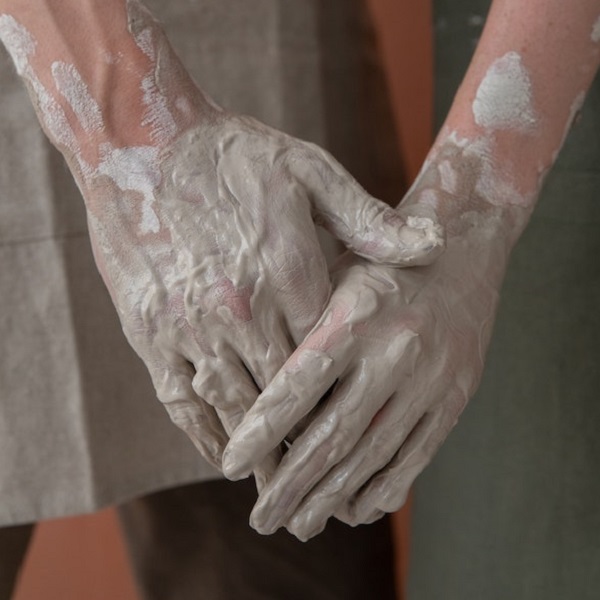
1. Slip
This is the thick, liquidy stage of clay that accumulates on your hands and around the splash pan when throwing forms on the potter’s wheel. Slip is a thick liquid, it’s very wet, and homogeneous in texture. It’s used like a glue of sorts in the pottery studio. Using slip is an effective way to secure pieces of clay together, usually in the later leather hard stage.
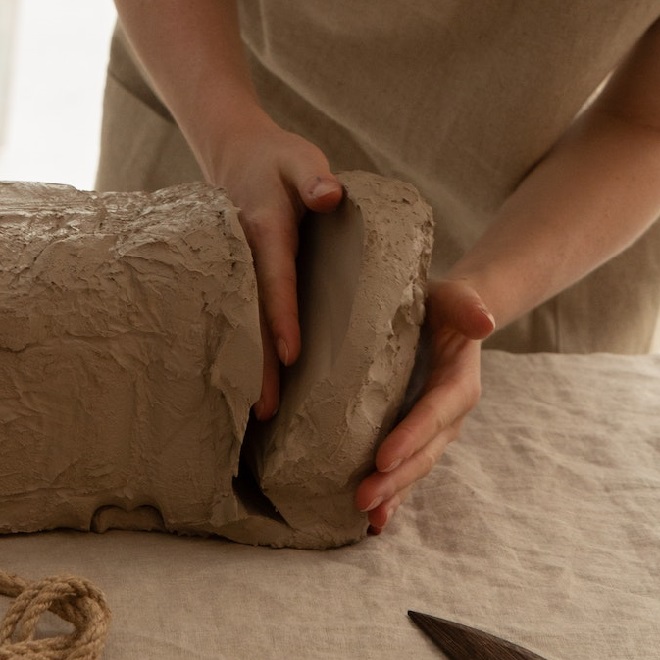
2. Plastic Clay
This is the typical clay (either recycled or from-the-bag) that Potters use in the studio. Clay is soft, wet, and easily formed into shapes in the plastic stage. Plastic clay is used for most methods of shaping; including throwing on the pottery wheel, creating pinch pots, rolling slabs of clay for hand building, and shaping pieces over molds or forms.
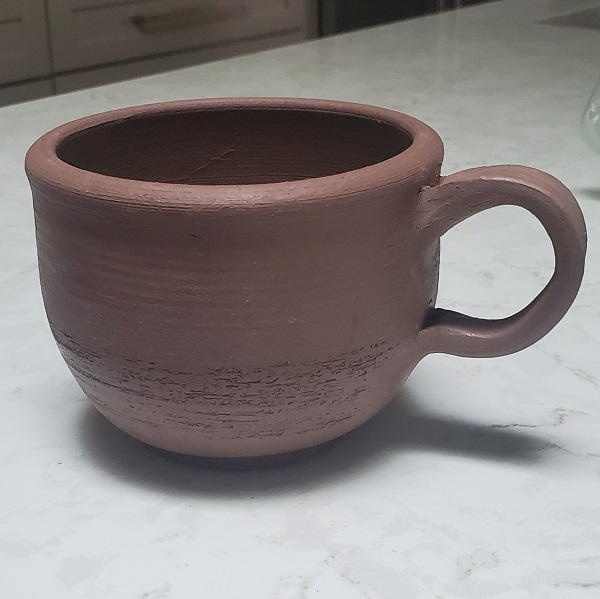
3. Leather Hard
In the leather hard stage, clay has been allowed to dry (usually slowly, sometimes wrapped in plastic) over a period of time, sometimes many days. At this stage, a piece can be handled fairly easily, but is still soft enough for trimming to its finished form. When clay is leather hard, it can be easily trimmed on the pottery wheel, by removing the clay with trimming tools, in smooth ribbons.
Potters will trim and use smoothing tools at the leather hard stage to create the final shape of a piece. This is also the stage of clay that’s ideal for creating a foot rim, attaching a handle to a form, or building larger forms out of slabs, In general, the leather hard stage is ideal when you want to attach pieces of clay together.
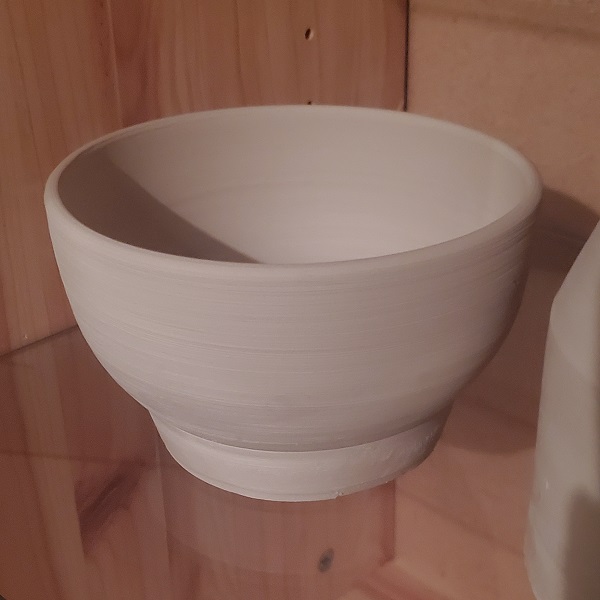
4. Bone Dry
Bone dry clay is clay that has completely dried and has no water left in it. When a piece reaches the bone dry stage, it is ready for its first (bisque) fire in the kiln. Bone dry clay is extremely fragile, and must be handled very carefully. You will also hear bone dry clay referred to as greenware. Greenware is best stored away from the main working area in the studio, so as to minimize the possibility of damage before a piece is fired.
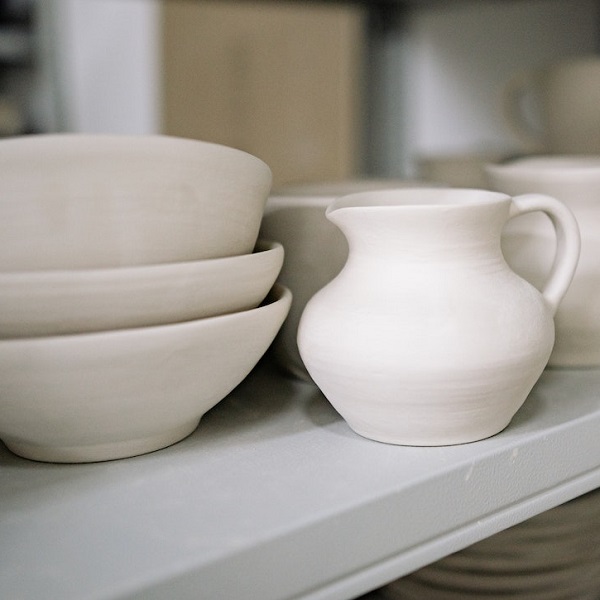
5. Bisqueware
Bisqueware is the stage of clay after it is dry and fired in the kiln. Bisqueware is very sturdy (though it can still chip), and this is the stage of clay when pieces are typically glazed. Bisqueware can be handled easily, stacked, and is less likely to break at this stage. Once clay reaches the bisque stage, it cannot be wet down to turn back into plastic clay. However, bisqueware is porous, so it is not considered water tight until glazed.
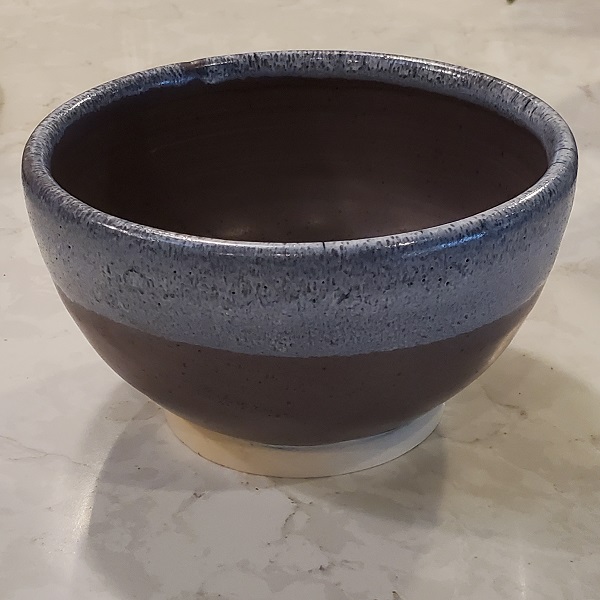
6. Glazeware
Glazeware is clay that has been fired for a second time, after being coated with glaze. This is the final stage of clay. At this stage, a piece is considered a finished piece of pottery and is ready to use (or sell)!

